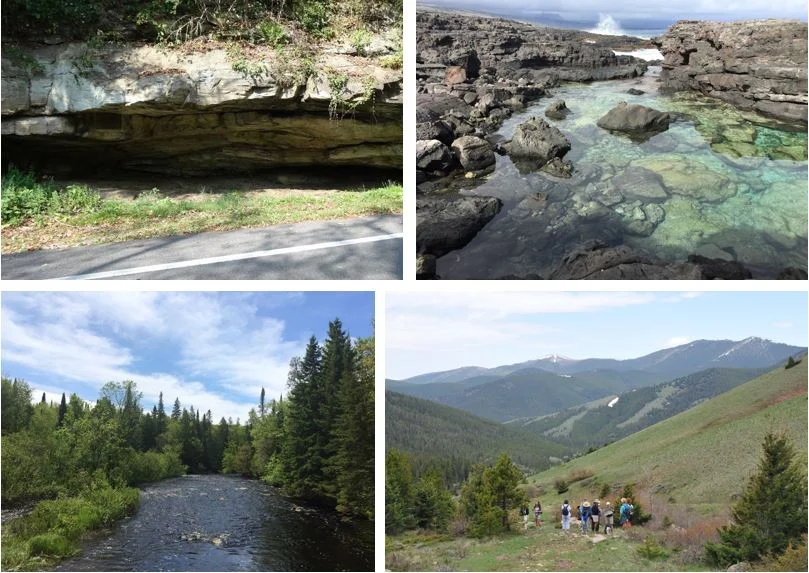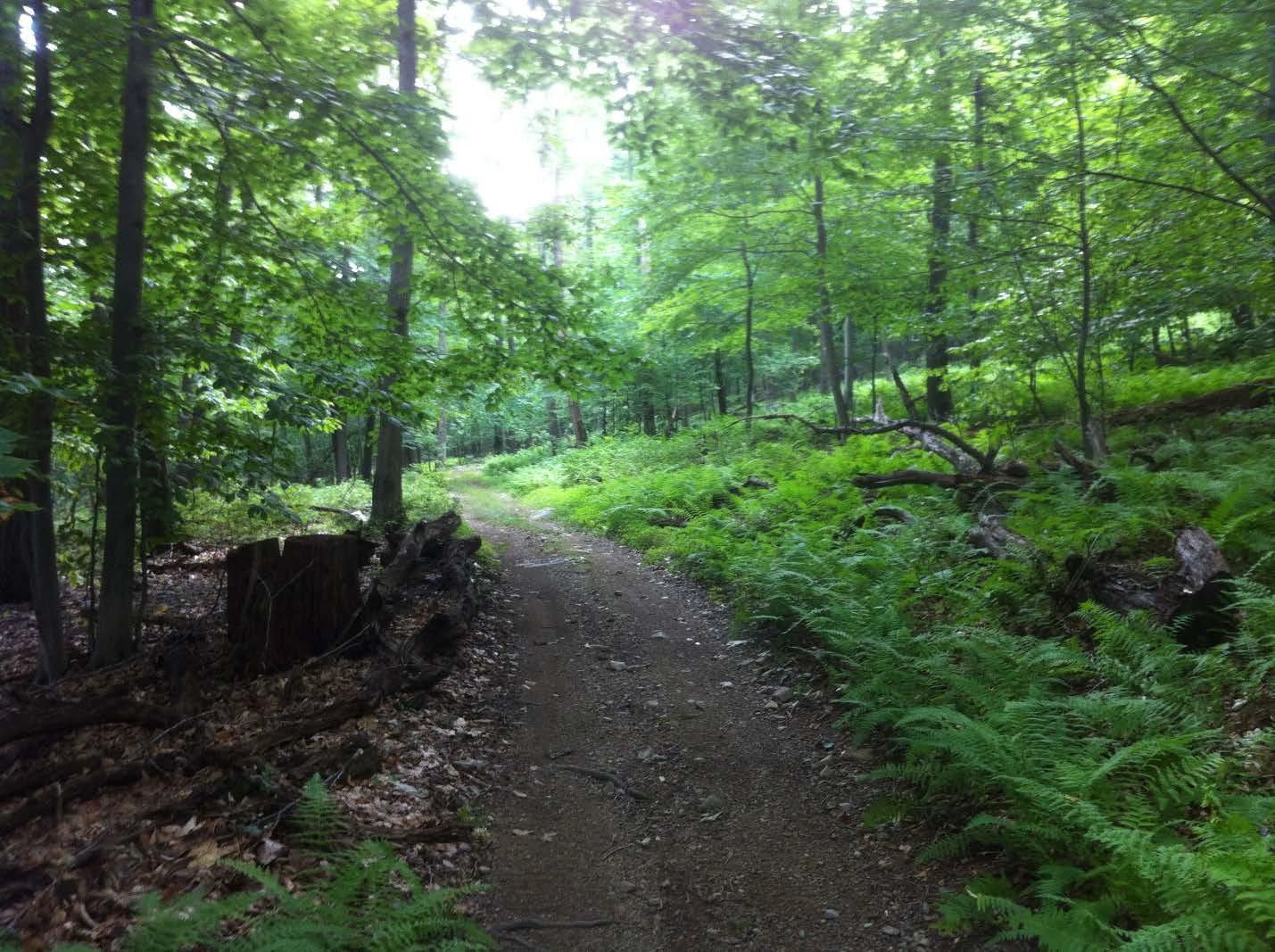Feeling stuffed after Thanksgiving? Grab your comfy pants and go outside for a post-feast hike to burn off some calories and enjoy the wonderful fall landscapes that this nation has to offer. On the Friday after Thanksgiving, we encourage Americans to give thanks for our public lands and #optoutside on one of our nation’s spectacular national trails, which provide unique access to our outdoors as well as health and economic benefits.
Here are the Top 10 National Trails projects threatened by cuts to the Land and Water Conservation Fund (LWCF), America’s most important conservation program. Our National Scenic and Historic Trails are a world-class resource for locals and tourists alike, major drivers of adjacent communities’ economies, and maintained by thousands of volunteer hours. But they are still incomplete, and vulnerable to disruption by nearby development. If the Trump Administration’s budget cuts are enacted, each of these critical conservation projects will go unfunded, putting these trails at risk. To protect our trails, Congress needs to #SaveLWCF from expiration in September 2018, preventing future national trails projects from being lost forever. Follow these links for more information on LWCF and how to contact your representative and encourage them to #SaveLWCF.
1. Appalachian National Scenic Trail, Pennsylvania
The Appalachian Trail, one of the most iconic National Park System units in America, is a historic 2,180-mile footpath that travels from Georgia to Maine passing through some of America’s most beautiful landscapes. This project is awaiting the conservation of 4,662 additional acres in Cherry Valley National Wildlife Refuge in Pennsylvania, which would secure 5 miles of the Appalachian Trail as well as keystone habitats for bald eagles, bog turtles, black bears, Indiana bats, and northern flying squirrels.
2. Pacific Crest National Scenic Trail, California
The Pacific Crest Trail is a 2,650-mile path from Mexico to Canada that traverses the scenic ridgelines of California, Oregon, and Washington, popularized by Cheryl Strayed and Reese Witherspoon in the book and movie Wild. The route, enjoyed by many thousands of hikers each year, embodies everything there is to love about the outdoors in the Western United States. A project in California (one of several on the PCT) is awaiting LWCF funds to preserve 3,843 acres, which would allow for the protection of 4.6 miles of the Pacific Crest Trail that currently sit on private lands. The funds would also secure a new trailhead that would provide greater access to 5 alpine lakes.
3. Ala Kahakai National Historic Trail, Hawaii
Think Hawaii is just about swank resorts? Think again. The state has an incredibly rich culture and history, one that should not disappear behind private luxury properties. The Ala Kahakai National Historic Trail is 175 miles long and is historically and culturally significant, traversing through hundreds of ancient Hawaiian settlements. LWCF funding would protect 1,363 acres, which encompasses 444 archaeological features at an ancient coastal indigenous gathering area that hosts a wealth of native plants and wildlife both above and below ground in lava tubes.
4. Nez Perce National Historic Trail, Idaho
The Nez Perce Historic Trail stretches from Oregon to Montana, and commemorates the 1877 flight of a Native American tribe, the Nez Perce, as they were chased out of the region by Army generals. The trail is an important commemoration of cultural memory, paying homage to one of the most fascinating and sorrowful events in American history. In Idaho, LWCF funding is needed to protect 1,130 acres that encompass 2 miles of the trail and include riparian ecosystems crucial to the health of the watershed along with important migratory corridors for animals. The preservation of the land would also allow for increased public access for fishing, an important touchstone for both the lifestyle and the economy of Idaho.
5. Captain John Smith Chesapeake National Historic Trail, Virginia
The Captain John Smith Chesapeake National Historic Trail is a remarkable water route that documents and celebrates a historic encounter between John Smith and indigenous peoples. Over 400 years ago, John Smith and his crew members mapped out almost 3,000 miles of Chesapeake Bay. LWCF funding is needed to preserve 978 acres of this historic site that includes sections of the water trail. The area awaiting preservation would also protect a major migratory bird stopover habitat.
6. Continental Divide National Scenic Trail, Montana
The Continental Divide National Scenic Trail spans 3,100 miles from Mexico to Canada, traversing 5 Western states: Montana, Idaho, Wyoming, Colorado, and New Mexico. It is considered one of the greatest long-distance trails in the world, and while very few complete the arduous journey in full, many adventurers each year enjoy hiking and biking shorter sections of the trail. In Montana, LWCF funding is needed to preserve 620 acres, which would connect existing access points to the trail to increase public use, along with protecting a half-mile of the trail itself.
7. Florida National Scenic Trail, Florida
Florida National Scenic Trail is a 1,300-mile trail stretching from the Everglades to Pensacola Beach, winding across some the Sunshine State’s most scenic landscapes, from the coast to forests to wetlands. The trail is within easy access of many of the nation’s most densely populated communities and is hailed as a great escape into the outdoors for adventurers. Florida is awaiting LWCF funding for the protection of 29 acres, which will fill trail gaps and provide connectivity between protected areas.
8. Lewis and Clark National Historic Trail, Washington
The Lewis and Clark National Historic Trail is approximately 3,700 miles long, spanning from Illinois to Oregon, connecting 11 states along the way. The trail pays homage to the legendary journey of early-18th century explorers Meriwether Lewis and William Clark, who are credited as the first European settlers to travel across the West and discover the Pacific Ocean, opening the door to America’s future. LWCF funding is needed to conserve 88 acres in Washington that include unique ecosystems in need of preservation. The project will enhance ecosystem connectivity across Western lands.
9. North Country National Scenic Trail, Michigan
The North Country National Scenic Trail is a 4,600-mile trail that stretches from New York to North Dakota, “Uniting America’s Red Plaid Nation.” LWCF funds are needed for an urgent project in Michigan’s beautiful, forested Upper Peninsula to close a 6-mile gap in the trail where hikers must currently hug a dangerous roadway. In addition to hiker safety, this project would protect a key access point for outdoor recreationists and fly fisherman along the Sturgeon River, a nationally recognized trout fishing destination, and also allow for wildlife migration under US Highway 41. The land in question is under imminent threat of sale to developers, so if Congress fails to adequately fund LWCF it could be lost to the public forever.
10. Overmountain Victory National Historic Trail, Tennessee
Spanning Virginia, Tennessee, North Carolina and South Carolina, the Overmountain Victory National Historic Trail covers 330 miles of historic land along the route used by Revolutionary American patriot militia during the pivotal Kings Mountain campaign of 1780. LWCF funding is needed to secure 10 acres, which will facilitate public understanding of this important campaign to our nation’s founding history. The funds will be used to protect the historically significant Shelving Rock Encampment Site and preserve original roadbed.
All photos courtesy of the Partnership for the National Trails System.











